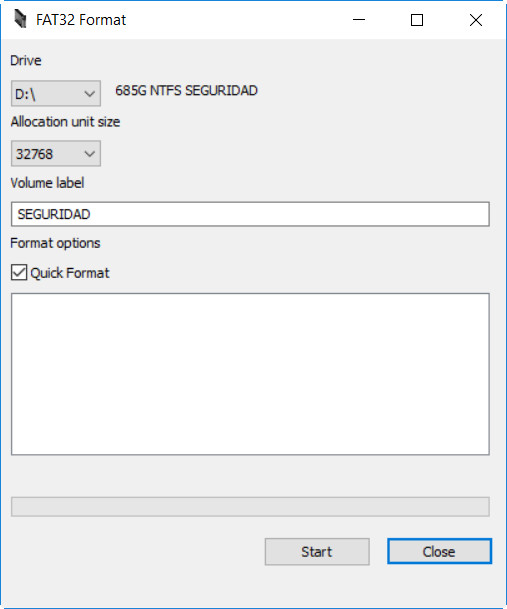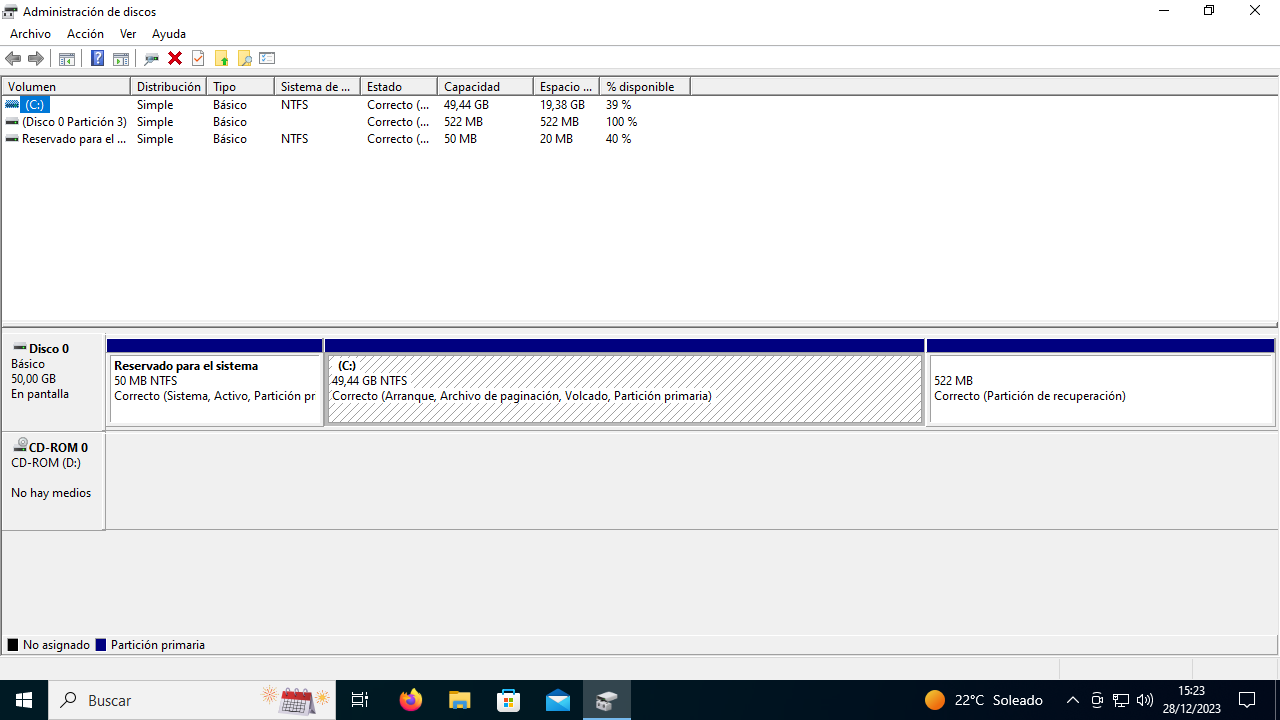Read about the most used file systems in Windows
- January 1, 2024
- 0
Windows It has traditionally been a very conservative system, so it has not tended to introduce revolutionary changes on many fronts over the decades. One aspect that hasn’t
Windows It has traditionally been a very conservative system, so it has not tended to introduce revolutionary changes on many fronts over the decades. One aspect that hasn’t

Windows It has traditionally been a very conservative system, so it has not tended to introduce revolutionary changes on many fronts over the decades. One aspect that hasn’t changed much is the support for file systems, which can’t be said to have much variation since the launch of Windows 2000, especially if we’re talking about a local installation of the desktop edition. where NTFS has reigned supreme for over two decades and ReFS doesn’t seem likely to displace it in the near future.
For home users, the main file systems are Windows NTFS, FAT, FAT32 and exFAT. The first is used mainly for the operating system and external hard drives; FAT, which is FAT16, is a format that has actually fallen out of use because it has become obsolete to meet current needs; FAT32 is a veteran that, despite its limitations, is still widely used due to its high compatibility; while exFAT was created to remove some of the most significant limitations of previous versions of the file system.
In this article, I will explain a bit about the main file systems used by home Windows users, as FAT16 is very rarely used these days. I will also mention above the theoretical compatibility they have with Linux and macOS, two operating systems that are forced to coexist with Microsoft.
We’ll start with what is perhaps still the king of external drives, although it’s been losing a lot of ground in recent years due to the huge capacity that even the cheapest flash drives have these days.
The main advantage of FAT32 is its high compatibility, since it is supported by practically any operating system that has achieved minimal expansion and relevance, including Linux, macOS and Android.. Here we also have to add a large number of devices that are able to at least read it, so if you want to have a guarantee that the pendrive will recognize devices such as video game consoles or copiers, it turns out to be the best option. safe.
However, despite its high compatibility, FAT32 is a very old file system and therefore drags limitations such as not supporting partitions larger than 8 terabytes and not being able to store files larger than 4 gigabytes. Another thing that users may run into is that it causes problems when using many levels of subfolders, so if you want to save something like CMS Moodle, you would have to put it in a compressed file first.
Continuing with flash drives, FAT32 is not highly recommended for drives that have 16 gigabytes or more of storage capacity. The reason is not in anything technical, but in the inability of the file system itself to store files larger than 4GB. If you’re using a 16GB or larger flash drive, it might be a good idea to format it to exFAT if it’s not in that format by default.
For two decades, it has been difficult to find a modern installation of Windows (since version 2000) that uses FAT32 as the file system to support the operating system itself. And for the clueless, it lacks some security features that are present in NTFS and other more modern file systems, although it is still used for the boot partition in UEFI systems.

New technology file system (NTFS) needs no introduction at this point as it’s the file system that Windows has used by default since version 2000. Yes, I know that this version was mainly aimed at businesses and that for home environments it should officially start counting from XP, but high the stability provided by version 2000 caused many to choose to use it on their personal computers.
NTFS represented and continues to represent an important development compared to FAT due to the inclusion of permissions, transaction logging (magazine) to guarantee file system integrity, snapshots, encryption, user disk space quotas, hard links, and many other things. Although it is a veteran of our time, it is a file system that responds correctly to the demands and needs of current users, although its own evolution must also be taken into account here.
Definitely NTFS is responsible for greatly increasing the ceiling in terms of storage capacity, both for the partition itself and the maximum file size it can store.. NTFS5, the latest major version, can store a file up to 16 exabytes, while the previous version is capable of supporting a file up to 16 terabytes. In the home environment and in the current technological context, it is de facto endless for the user.
In addition to supporting Windows installation, NTFS is still widely used today on external hard drives, especially if they are a few years old, and due to the fact that they “remove” the limitations present in FAT32. In recent years, the use of exFAT should increase, but external hard drives are perhaps the storage units that are formatted the least, even less than the partitions used to install operating systems and pen drives.
However, not all is good news regarding NTFS, as its support by other operating systems is somewhat limited, especially when it comes to Mac Operating System. By default, Apple’s operating system is only able to read NTFS partitions It is recommended to use some third party software for writing supportsuch as Paragon NTFS, OSXFuse or Tuxera NTFS for Mac.
In Linux, the situation is better, but without support to be able to install the operating system there. Despite this disadvantage, Linux can use NTFS as a data partition, can read and write by default. In fact, this support is widely used in typical Windows data recovery operations through a live Linux session.

exFAT was introduced in 2006 and originally featured in Windows XP and Vista. Its name refers to the Extended File Allocation Table, which is already a hint Its purpose is to “extend” the capabilities of FAT, or rather remove some of its most obvious limitations.but without mentioning many of the best ones that are present in NTFS.
For regular users, The most significant limitation of FAT32 is the maximum file size of 4 GB. exFAT is responsible for extending this limit to 16 exabytes, of which there are de facto infinity in the home environment and with current technology. In addition, it supports a maximum volume of 128 petabytes, making it ideal for large-capacity external hard drives and flash drives initially.
As we can see, exFAT is responsible for crushing the main limitations of FAT32 while maintaining features such as high read and write speeds, however, the compatibility issue may not be completely resolved on all fronts. Windows and macOS have full support as long as you don’t throw encryption in the shaker, while on Linux this situation should have been rectified a few years ago with the release of Microsoft’s file system specifications. In extreme cases, installing packages exfat-fuse and exfatprogs Ubuntu should cover that front.
Resilient File System (ReFS) is the latest file system developed by Microsoft for its well-known operating system: Windows. Eleven years after its official introduction, however, it doesn’t seem to have spread much beyond the server-oriented editions.
Stick to the official documentation, ReFS is designed to maximize data availability, efficiently scale large data sets across different workloads, and provide data integrity. thanks to resistance to corruption. This resiliency is offered through integrity sequences, storage integration, data recovery and proactive error correction.
ReFS has features not found in NTFS, such as block cloning, sparse VDL, mirror-accelerated parity, and file snapshots, but lacks many features found in NTFS, including file system compression. files, file system encryption (although both support BitLocker encryption), transactions, and the fact that it’s bootable, among other things.
Whether due to its limitations compared to NTFS or its apparent server orientation, ReFS is not a technology that has a presence in home environments today and remains unknown to most. Its support in Linux must be covered by third-party software, such as that developed by Paragon.
And these are the file systems with the most weight in Windows, even if one of them is largely unknown on the desktop for the masses. Today, and depending on the operating systems used on the PC (if you use any besides Windows), the most prominent are NTFS, FAT32 and exFAT, for the reasons already explained.
Source: Muy Computer
Donald Salinas is an experienced automobile journalist and writer for Div Bracket. He brings his readers the latest news and developments from the world of automobiles, offering a unique and knowledgeable perspective on the latest trends and innovations in the automotive industry.